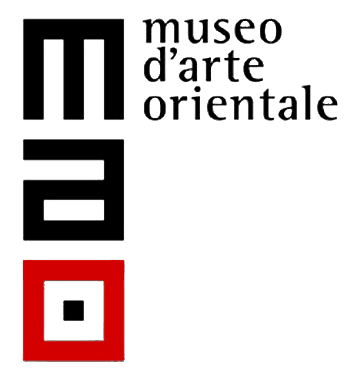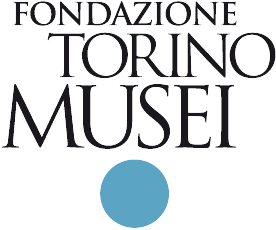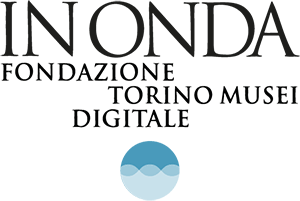The Primacy of the Artwork. The new installation of the historic 20th-century collections at GAM in Turin
- Exhibition
- 26 September 2020 - 10 August 2022

- Yves Klein
- Vasco Bendini
- Umberto Boccioni
- Tal Coat
- Sergio Saroni
- Renato Birolli
- Pierre Soulages
- Piero Ruggeri
- Piero Manzoni
- Paul Klee
- Paola Levi Montalcini
- Pablo Picasso
- Otto Dix
- Michelangelo Pistoletto
- Max Ernst
- Mario Merz
- Marc Chagall
- Pierpaolo Calzolari
- Lucio Fontana
- Louise Nevelson
- Jean Arp
- Hans Hartung
- Giuseppe Penone
- Giulio Paolini
- Giovanni Anselmo
- Giorgio Morandi
- Gino Severini
- Gilberto Zorio
- Giacomo Soffiantino
- Giacomo Balla
- Francis Picabia
- Fausto Melotti
- Enrico Prampolini
- Ennio Morlotti
- Eduardo Chillida
- Carla Accardi
- Antonio Sanfilippo
- Andy Warhol
- Amedeo Modigliani
curated by Riccardo Passoni
From September 26, 2020
GAM renews the installation of its permanent 20th-century collections with a new itinerary that aims to reinstate the centrality of the artwork. This updated installation has been conceived to allow for comparison between works of art: the sequence of paintings, sculptures, and installations is accompanied by brief essential information that introduces a reading to the various styles, from one generation to the next, which the artists elaborated.
Divided into nineteen sections, the collection favors a historic-artistic approach that follows the main art movements from this past century, but also highlights the history of the civic collections on the art scene in Turin, Italy, and abroad. This narration also includes some solo rooms, which demonstrate the desire to reinstate the undeniable value of some artists, along with the opportunities afforded by our collections to present them with important works of art.
The first room is dedicated to three artists who, on various levels, most influenced 20th-century Italian and international art. Giorgio de Chirico established a new way of thinking about artworks while searching for a kind of representation that was also philosophical revelation. Giorgio Morandi developed a cult of form and its unlimited variations, in a sort of conceptual discipline, with a mental and temporal continuity that allows us to present, at the start of this itinerary, his late Still Lifes. Finally, there is Filippo de Pisis, who left behind a lesson in total freedom from conditioning, overturning the academic mentality, and at the same time shielded from avant-garde anxiety, thus creating a solitary style that acted as a bridge between Impressionism and Informal art.
This introduction is then followed by an itinerary that, room after room, covers some pivotal stages in art history, represented by masterpieces from the collection: from the Historic Avant-gardes with works by Umberto Boccioni, Gino Severini, Giacomo Balla, Enrico Prampolini, Otto Dix, Max Ernst, Paul Klee, and Francis Picabia to the stimulating artistic proposals born in Turin between the world wars and including works by most of the Sei di Torino; from the rediscovery and influence of Amedeo Modigliani on the artists in Turin also thanks to the studies of Lionello Venturi, who was professor of Art History at the University of Turin, to the acquisition of paintings and sculptures for the GAM collection between the late 1920s and throughout the 1930s at the Venice Biennales and the Rome Quadriennali.
The section on Italian Abstraction is represented by artists such as Fausto Melotti, Osvaldo Licini, and Lucio Fontana, while the following rooms cover key moments of Rome and the Via Cavour School, explore Post 1945 between Figurative and Abstract Art, and display the surprising purchases of international works following the war in the section titled For an International Civic Gallery, where we find artists like Marc Chagall, Hans Hartung, Pierre Soulages, Tal Coat, Pablo Picasso, Jean Arp, and Eduardo Chillida.
As far as experimentation goes, the 1950s were the years of Informal art, and GAM as well possesses important works: from the “Informal sign-painting” of Carla Accardi, Giuseppe Capogrossi, and Antonio Sanfilippo to compositions in Informal style of landscapes and nature by Renato Birolli, Ennio Morlotti and Vasco Bendini. An Informal practice that is certainly more vehement and radical is represented by Emilio Vedova, while the art scene in Turin was also engaged in these dynamics, through Piero Ruggeri, Sergio Saroni, Giacomo Soffiantino, and Paola Levi Montalcini.
The direct language of New Dada and Italian and International Pop Art (including Piero Manzoni, Louise Nevelson, Yves Klein, and Andy Warhol) would give way to renewed concepts and materials. After a period at the Museo sperimentale di arte contemporanea, which was donated in late 1965 to the Galleria Civica d’Arte Moderna and composed of a fund which today boasts 364 works that aim to represent the broadest range of innovative and experimental artistic languages, which are here represented with an impressive selection of works, the new installation culminates in the experience of Arte Povera, which opens up to a new language, to explorations in total freedom from conditioning. On display are all artists from the movement theorized in 1967 by Germano Celant. In 1970, the Galleria d’Arte Moderna became the first museum ever to hold these works by: Pier Paolo Calzolari, Mario Merz, Giuseppe Penone, Giovanni Anselmo, Alighiero Boetti, Jannis Kounellis, Michelangelo Pistoletto, and Gilberto Zorio.
The itinerary also offers rooms dedicated to individual artists: Felice Casorati, who left an indelible legacy both in Turin and Italy; Arturo Martini, who helped to change the connotations of Italian sculpture; Alberto Burri and Lucio Fontana, who modified the substance and concept of their practice while influencing international art after World War II. Thanks to the growth of the collections, we are now able to offer, in a comparison of great contrast, the importance of fundamental actions such as the creation of the “Gibigianna” cycle by another pivotal artist on the international art scene: Pinot Gallizio.
Finally, Giulio Paolini is given his own space for having showed us the need to always maintain relations with art history, with its signs and references, and their value for a conceptual rebirth of form.





